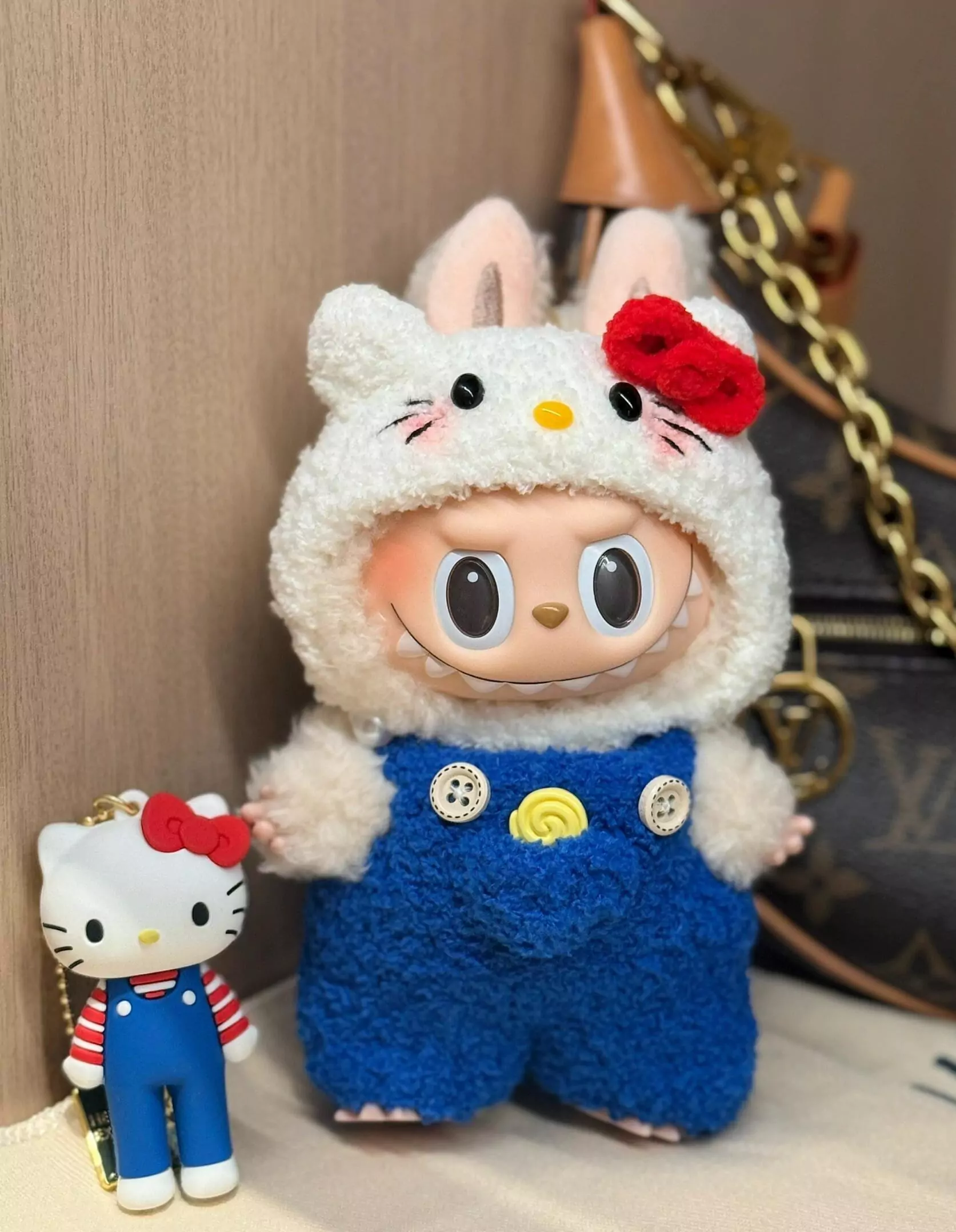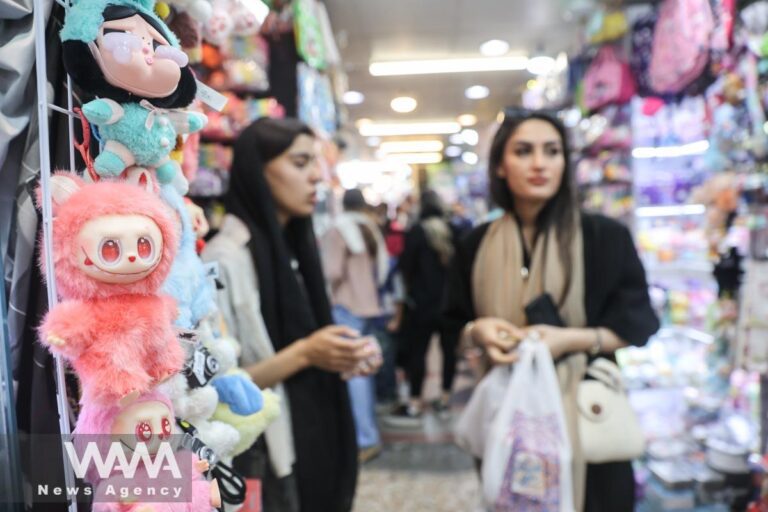WANA (Oct 08) – In recent months, Labubu dolls have turned into one of the world’s most popular trends. Despite having no official introduction or marketing campaign in the Persian land, these ugly yet endearing dolls have captured the hearts of many Iranian children and teenagers.
A major question among social and cultural observers is this: why has a doll with no cultural resemblance or connection to Iranian society become so warmly received by the younger generation?
The reality is that today, Labubu is no longer just a toy; it is a reflection of the modern world — a world where the boundaries between culture and commerce have disappeared. Labubu was born inside smartphones — through endless scrolling and social media stories.
To children, it may simply appear as a funny and adorable creature. But to cultural observers, Labubu represents an era in which even toys have become globalized, and where a small social media wave can quickly turn into an economic and cultural phenomenon.
To better understand the reasons behind Labubu’s rapid spread in Iran, WANA spoke with Leila Babaei, Director General of Creative Entertainment and Computer Games at Iran’s Institute for the Intellectual Development of Children and Young Adults (Kanoon).

Leila Babaei, Director General of Creative Entertainment and Computer Games at Iran’s Institute for the Intellectual Development of Children and Young Adults (Kanoon)/ WANA News Agency
WANA: Who designed the Labubu doll, and what defines the artistic style behind it?
Babaei: Labubu is a product of Pop Mart, designed by Hong Kong artist Kasing Lung. He was born in Asia and raised in Europe, and his artistic style is shaped by both Eastern and Western styles.
Myths, legends, and illustrated storybooks from both East and West have influenced his artistic style. The character first appeared in 2015 in the illustrated series The Monsters — as a playful and kind-hearted creature with a distinctive dual design: fang-like teeth and a mischievous smile, combining ugliness with cuteness. This very contrast made Labubu highly appealing to audiences worldwide.
WANA: Why, unlike many cartoon and doll characters, does Labubu not belong to any specific ethnicity or nationality?
Babaei: One of the unique features of this doll and character is its cultural ambiguity. It does not belong to any particular nationality, ethnicity, or community. For instance, Mickey Mouse belongs to American society, and Hello Kitty is tied to Japanese culture. But Labubu has no affiliation with any nation, ethnicity, or country. This very lack of geographical and cultural identity is one of the reasons behind its global popularity.


Kitty and Labubu dolls. Social media/ WANA News Agency
WANA: What strategies has the producing company used to make this doll so widely appealing?
Babaei: The company has used several key tactics to make these dolls both popular and highly marketable.
First, the products are sold in a blind box format — meaning that while you know the general look and design of Labubu, you don’t know which color or version you’ll get until you open the package. This element of surprise creates excitement and drives the buyer to make a purchase.
The second strategy is encouraging collectibility — creating an atmosphere in which people want to own a full collection of Labubu dolls.
The third is the use of a scarcity system: some versions of the dolls are produced in limited quantities, and customers are informed that certain rare editions exist among the products. As a result, buyers often purchase multiple boxes, hoping to find those rare models.


A child holds a Labubu doll in Tehran Bazaar in Tehran, Iran, September 20, 2025. Majid Asgaripour/WANA (West Asia News Agency)
Another tactic is the use of the “fast fashion” or “rapid trend” model, which means quickly responding to consumer trends and creating short-lived but intense waves of popularity. This strategy also played a major role in Labubu’s commercial success.
WANA: How did Labubu become popular in Iran and other countries without any official introduction?
Babaei: The presence of Labubu in Iran and many other countries shows that, even without formal introduction through official channels, the doll has attracted a large audience and gained wide visibility. Although Pop Mart does not have a significant presence in the Middle East, Labubu became known through unofficial channels and social media.
The history of Labubu’s sudden and widespread popularity goes back to 2024, when one of the members of the K-pop group BLACKPINK — a major figure in South Korea’s music industry — attached a Labubu keychain to her bag. That moment showed how quickly a trend can spread once bloggers, celebrities, and influencers start engaging with it.
WANA: What role have celebrities and social media played in this trend?
Babaei: Today, we are at the intersection of the toy and entertainment industry with the media space. One issue that has not received enough attention is the power of social media, which has caused this doll to attract such remarkable and widespread attention both in Iran and around the world.


Labubu dolls are displayed in a store in Tehran Bazaar in Tehran, Iran, September 20, 2025. Majid Asgaripour/WANA (West Asia News Agency)
In the past, when merchandise related to an animation became popular, it went through a process — a story world was created. Characters were carefully designed and developed, and through a sustained relationship between these characters and the audience, a sense of attachment was formed that eventually led to the purchase of the related products.
But in the case of the Labubu doll, even without any accompanying animation, it has been warmly received — precisely because celebrities, influencers, bloggers, and generally the social media space, embraced it. This is the result of the strategic approach that the company adopted in introducing the doll.
WANA: Why did it become popular in Iran? Have Iranian media or celebrities promoted it?
Babaei: The rapid spread of the Labubu doll in Iran, occurring shortly after it became a global phenomenon, shows that the dominance of media has narrowed the gap between countries and trends. What becomes highly viewed and popular around the world — whether intentionally or not — will quickly become the same in our country as well.
WANA: What statistics exist regarding the sales of this doll in Iran?
Babaei: Various figures have been reported regarding Labubu sales in Iran — some of which are not entirely reliable. However, one of the more accurate estimates indicates that around 200,000 units of this doll have been sold in Iran, totaling approximately 100 billion tomans (about 1 million US dollars).


Labubu dolls are displayed in a store in Tehran Bazaar in Tehran, Iran, September 20, 2025. Majid Asgaripour/WANA (West Asia News Agency)
WANA: Are the dolls available in Iran original or copies?
Babaei: In China, the original Labubu doll costs around 20 US dollars, which is roughly 2 million tomans in Iranian currency. But the Labubu dolls being sold in Iran range between 800,000 and 1.5 million tomans (around 8 to 15 US dollars). In fact, the original version of the doll is not commonly available in the Iranian market; most are copies or high-quality replicas (high-copies).
This shows that for Iranian consumers, the issue of originality or imitation is not a major concern — what matters more is being part of the trend.
WANA: What connection exists between the Labubu trend and the attention economy in the media space?
Babaei: Paying attention to the fact that the high viewership of this product is based on the media space should direct our attention to the fact that, in any case, the “attention-based economy” in today’s media space and in cyberspace is a very important matter.
In fact, it is by using these very principles governing cyberspace that this doll has become highly viewed, and perhaps coverage by official media of this doll also makes it more visible. That is, when various news agencies, perhaps official organizations in the field of information, cover this doll in a news or media format, they are helping it become more highly viewed.


Labubu dolls are displayed in a store in Tehran Bazaar in Tehran, Iran, September 20, 2025. Majid Asgaripour/WANA (West Asia News Agency)
WANA: Considering cultural and aesthetic contradictions, what positive or negative consequences could Labubu’s presence in Iran have? What is the main concern of sociologists, cultural experts, and also Iranian families regarding this?
Babaei: This doll, which has received widespread attention both globally and in our country, Iran, has emerged as a symbol of anti-perfectionism. Unlike Western brands such as Barbie, which emphasize flawlessness, thinness, and perfect beauty, this doll displays a messy appearance and its imperfections, presenting these traits in a cute and appealing way.
In fact, this doll reminds us that attractiveness is not necessarily about perfection or flawlessness, and this message is particularly significant for a generation that sees reality, accepts it, and lives with it.
Furthermore, one cannot ignore the magic of media and the several-hundredfold, or even thousandfold, influence of cyberspace on this phenomenon; when something becomes a media trend, the audience pays less attention to whether it aligns with beauty standards and more to simply going along with the trend, regardless of its benefits or impact on their lives.
Although cultural experts are concerned about the impact of this doll on the aesthetic taste and sensibilities of our society—and this concern is noteworthy—the far more important issue is understanding what cyberspace, social networks, and the emerging platform-based society are actually conveying to people and what outcomes they are producing. How is this space shaping people’s tastes and preferences, and what impact is it having on their perceptions and attitudes?
WANA: Thank you for taking the time to do this interview.


